Angular Piezo Actuator Controlled Laser Resonator for Precise Sensing of Respiratory Diseases †
Abstract
:1. Introduction
2. Design of Mirror Holder with Angular Artifact Adjutment Piezo Actuator
3. Experiment with Two Mirror Resonator
3.1 System Setup
3.2 Finesse of Two Mirror Resonator
4. Results
4.1. Experiment with Two Angular Artifact Adjustment Piezo Actuator
4.2. Sensitivity of Two Mirror Resonator
5. Analysis
Author Contributions
Conflicts of Interest
Abbreviations
| COPD | Chronic Obstructive Pulmonary Disease |
| AAAPA | Angular Artifact Adjustment Peizo Actuator |
| FSR | Free Spectral Range |
References
- Risby, T.H.; Tittel, F.K. Current status of midinfrared quantum and interband cascade lasers for clinical breath analysis. Opt. Eng. 2010, 49. [Google Scholar]
- MacCurdy, M.R.; Bakhirkin, Y.; Wysocki, G.; Lewicki, R.; Tittel, F.K. Recent advances of laser-spectroscopy based techniques for applications in breath analysis. J. Breath Res. 2007, 1. [Google Scholar] [CrossRef] [PubMed]
- Thorpe, M.J.; Balslev-Clausen, D.; Kirchner, M.S.; Ye, J. Cavity-enhanced optical frequency comb spectroscopy: Application to human breath analysis. Opt. Express 2008, 16, 2387–2397. [Google Scholar] [CrossRef] [PubMed]
- Rawankar, A.; Urakawa, J.; Shimizu, H.; Honda, Y. Design of Pulsed Four Mirror Laser Resonator for Laser Wire with 5 μm Beam Size. Nucl. Instrum. Meas. A 2013, 700, 145–152. [Google Scholar] [CrossRef]
- You, Y.; Urakawa, J.; Rawankar, A.; Aryshev, A.; Shimizu, H.; Honda, Y.; Yan, L.; Huang, W.; Tang, C. Measurement of beam waist of an optical cavity based on Gouy phase. Nucl. Instrum. Methods Phys. Res. A 2012, 694, 6–10. [Google Scholar] [CrossRef]
- Rawankar, A.; Terenuma, N.; Akagi, T.; Aryshev, A.; Honda, Y.; Urakawa, J. Pulsed Green Laser Generation System for Effective Inverse Compton Scattering. In Proceedings of the International Beam Instrumentation Conference, Monterey, CA, USA., 14–18 September 2014. [Google Scholar]
- Yariv, A.; Yeh, P. Photonics: Optical Electronics in Modern Communication, 6th ed.; Oxford University Press: New York, NY, USA, 2007. [Google Scholar]
- Hodgson, N.; Weber, H. Optical Resonators; Springer: London, UK, 1997; pp. 41–42. [Google Scholar]
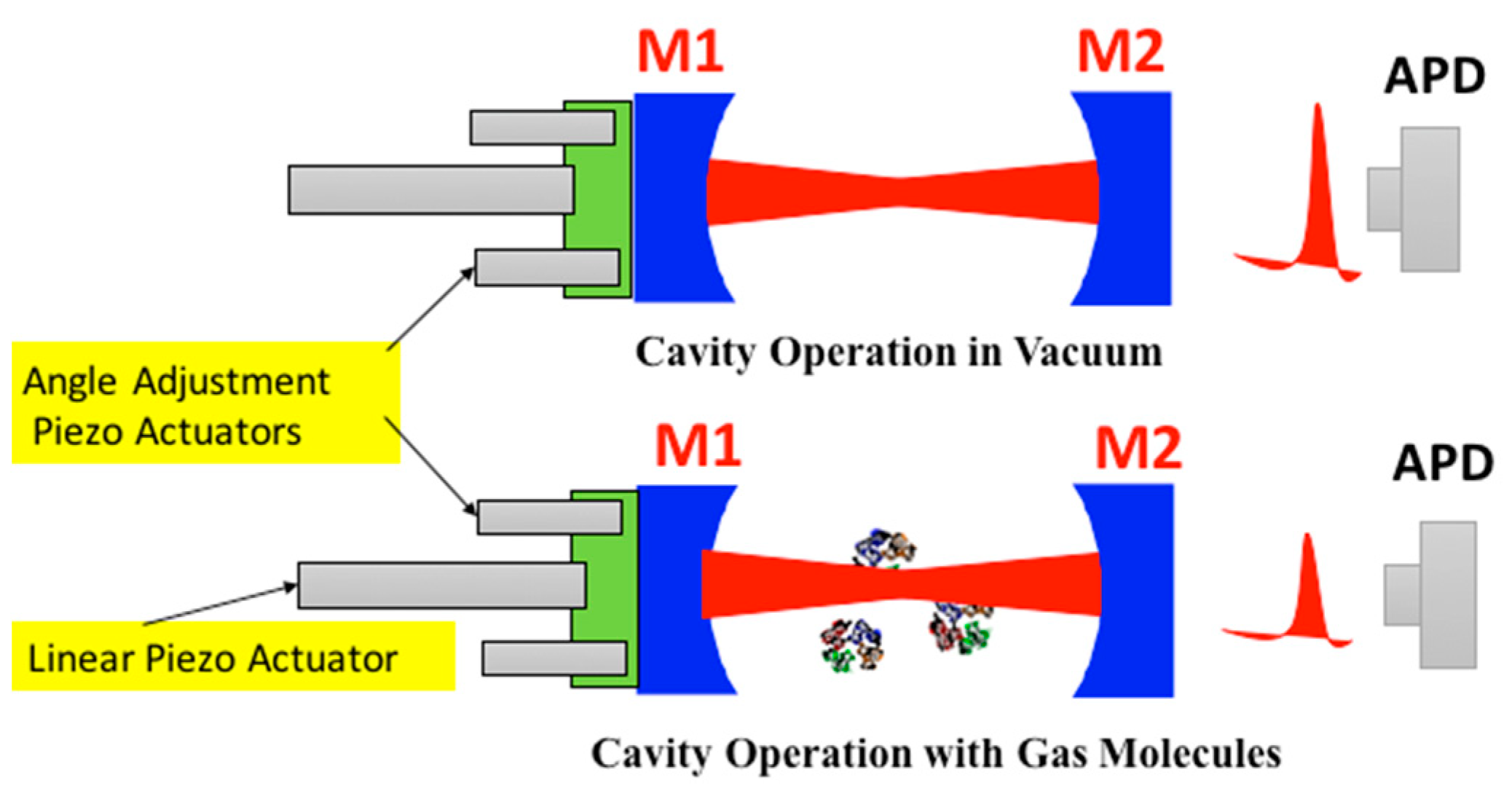
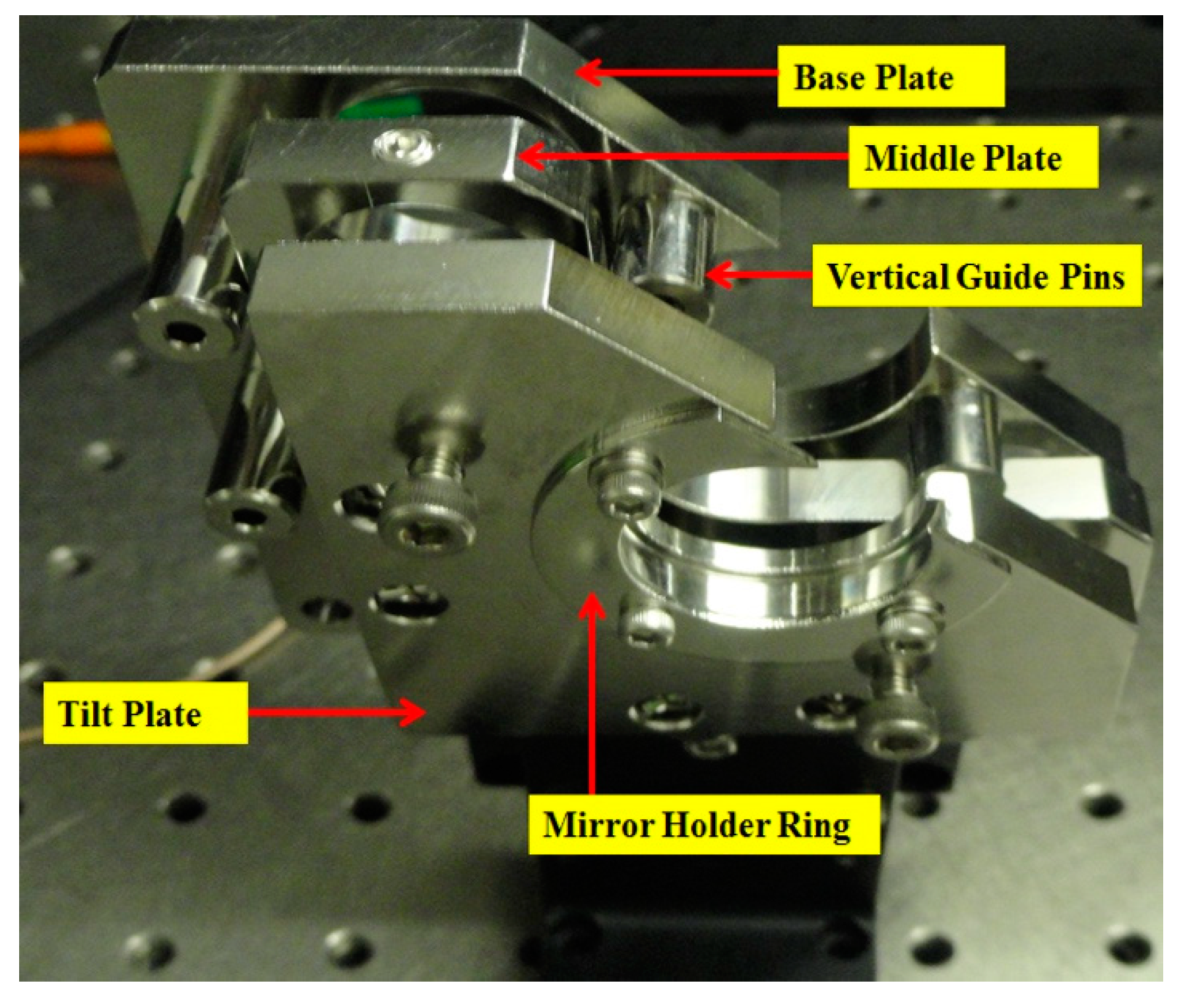
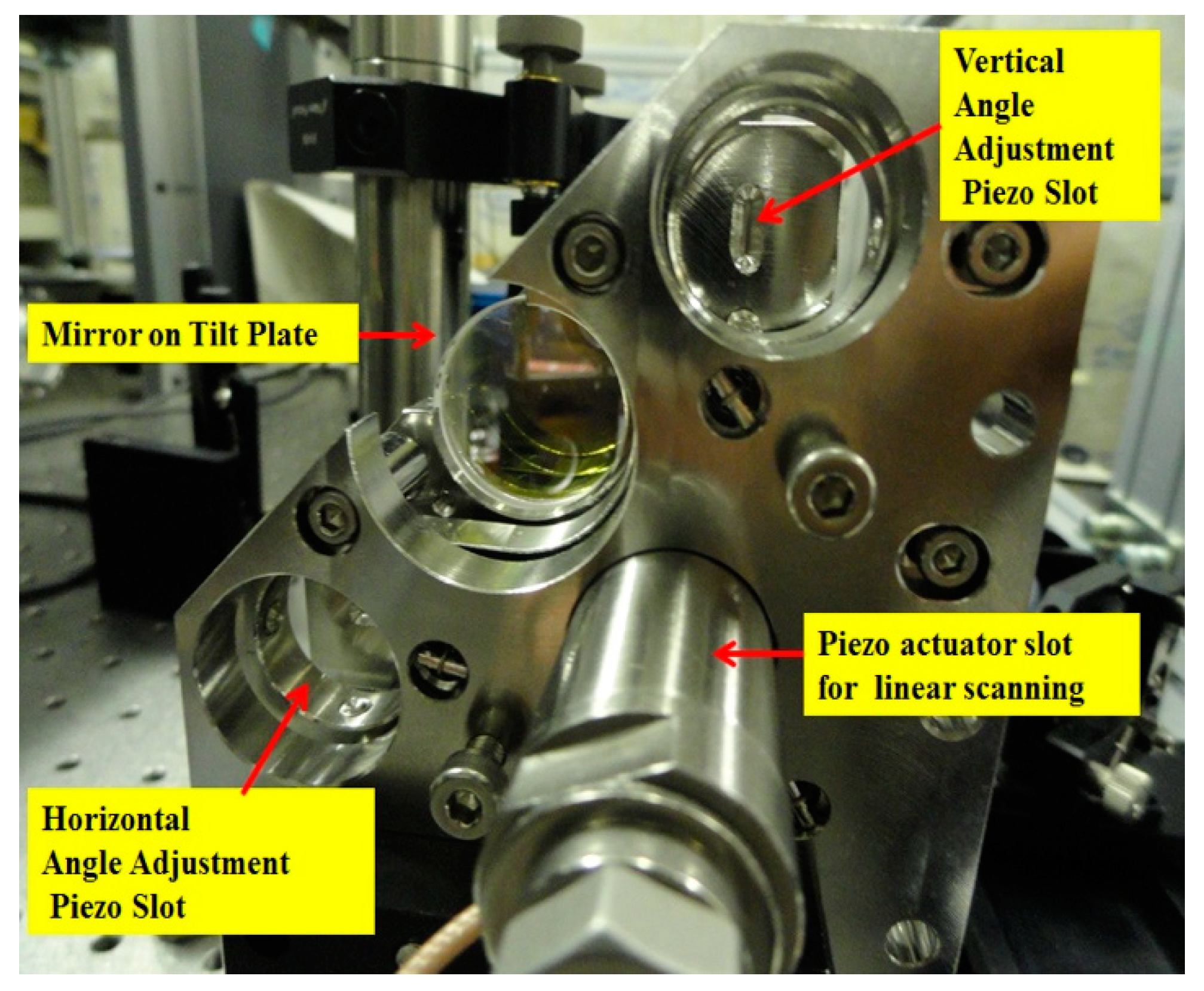
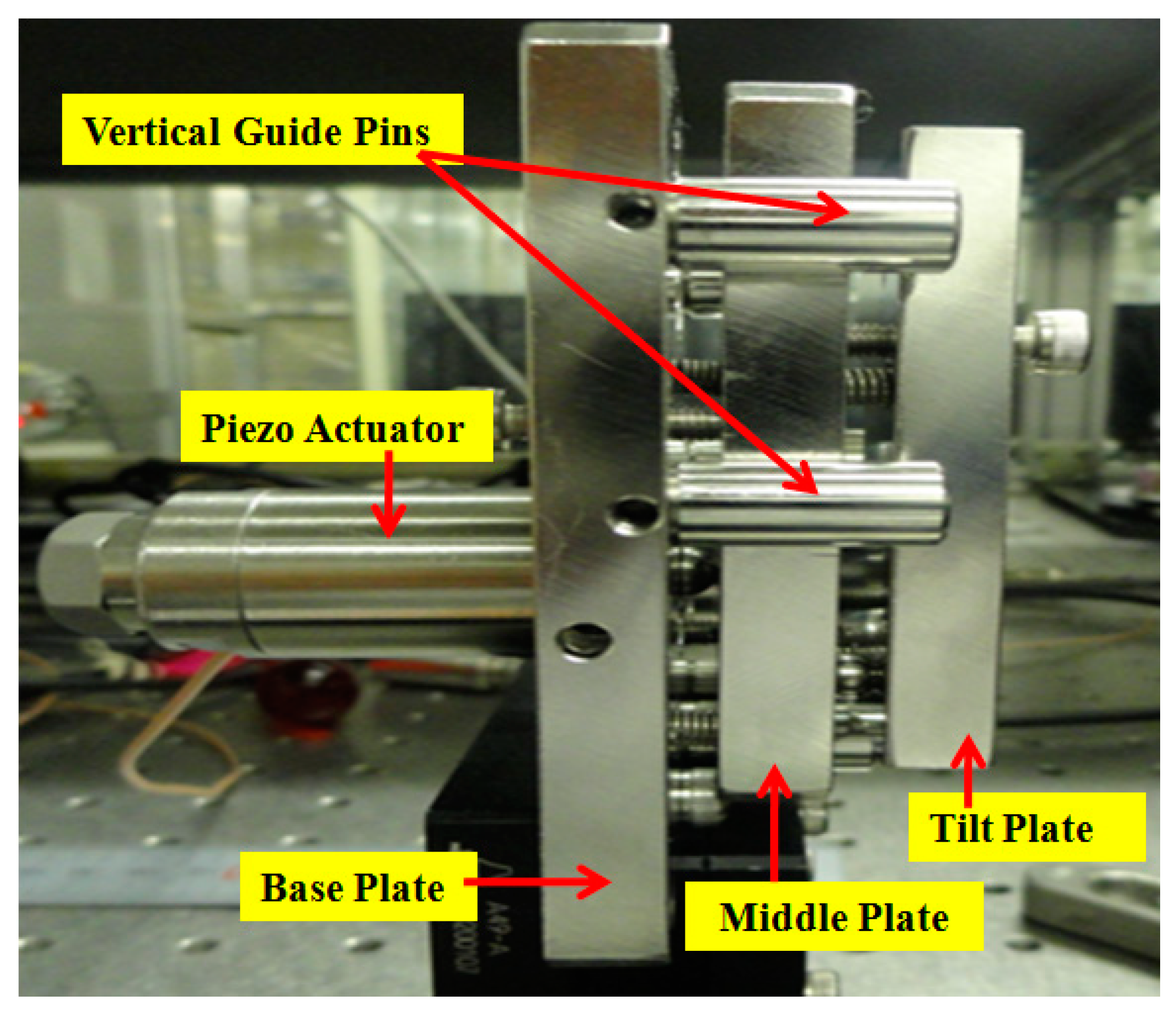
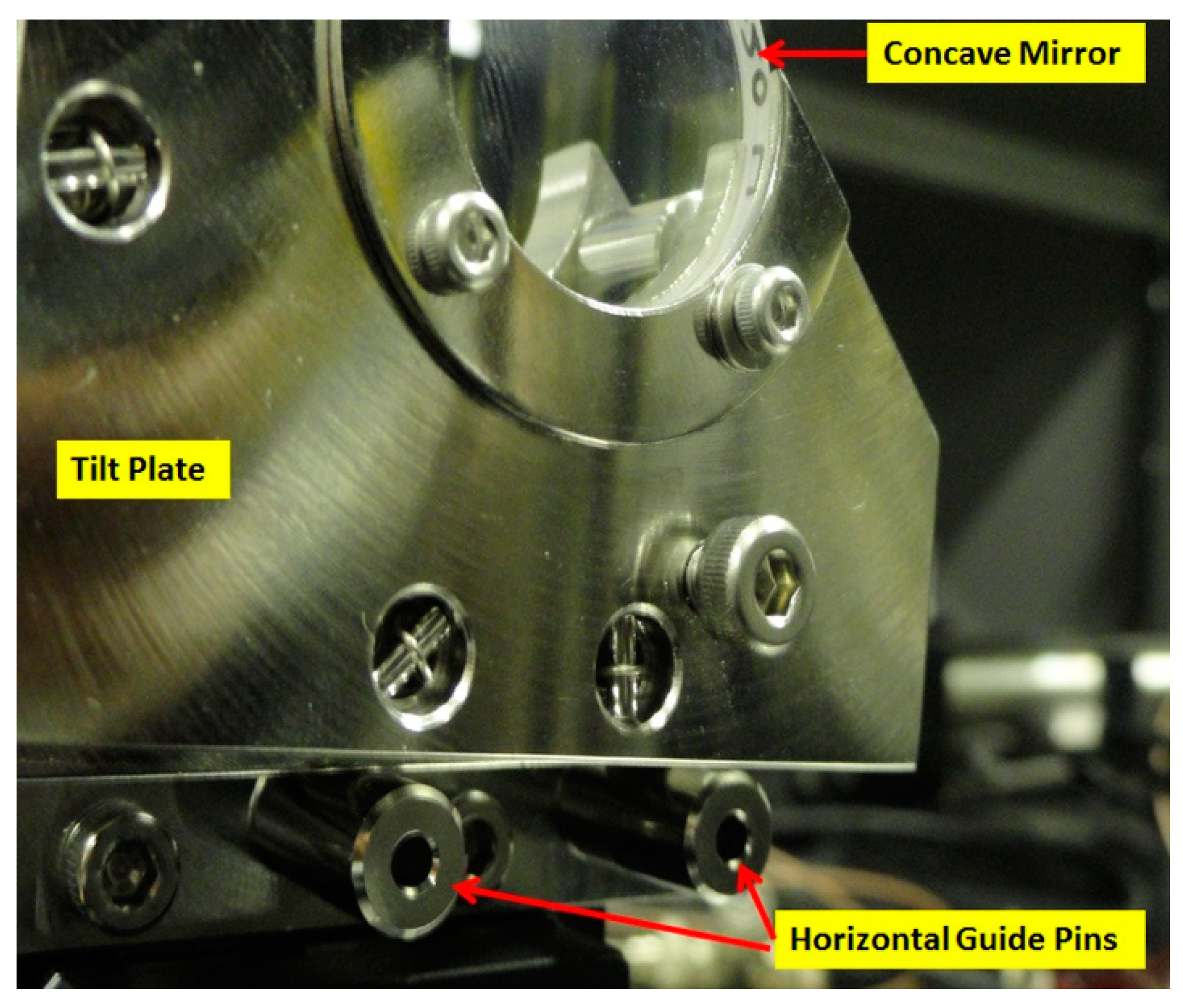
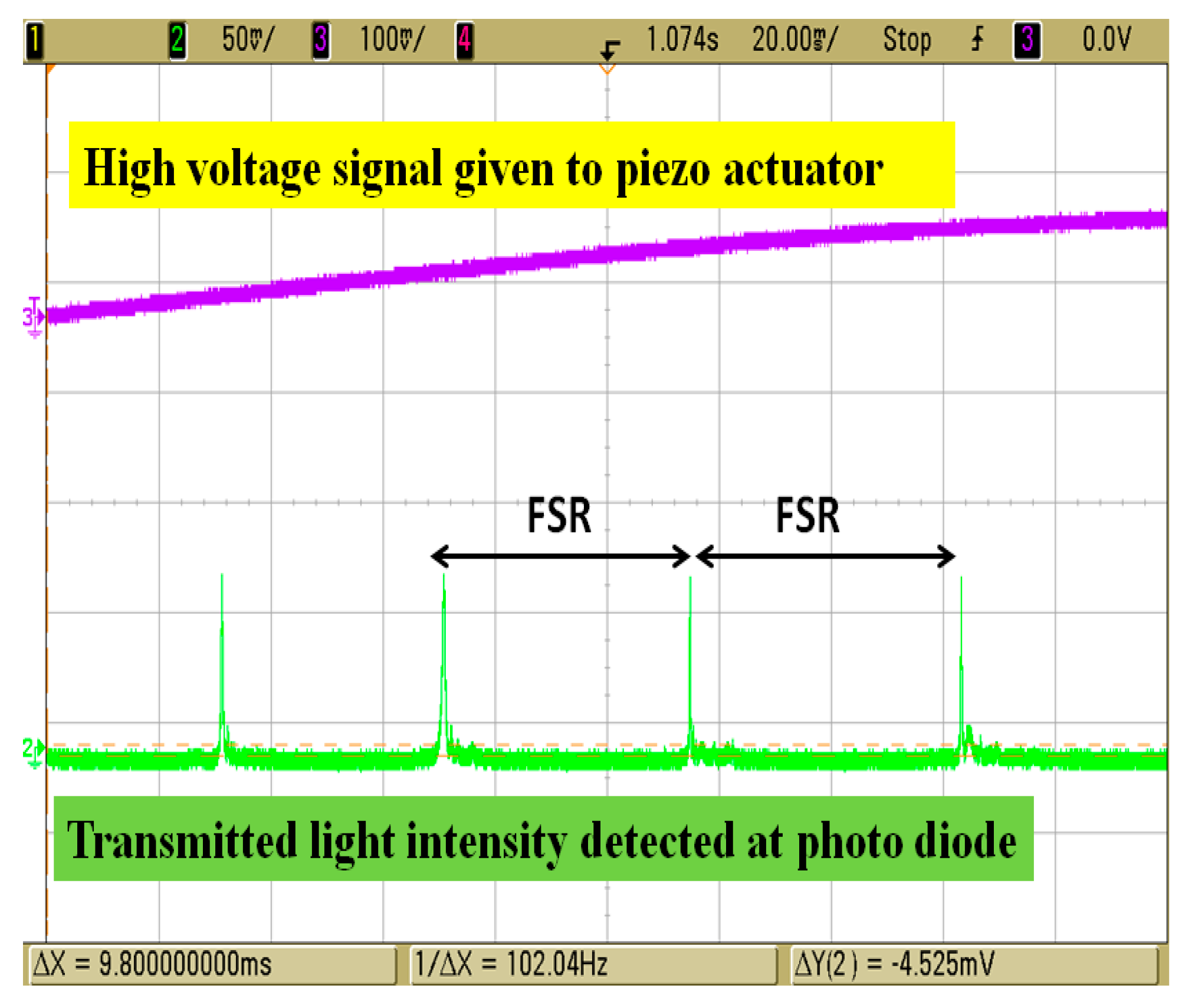
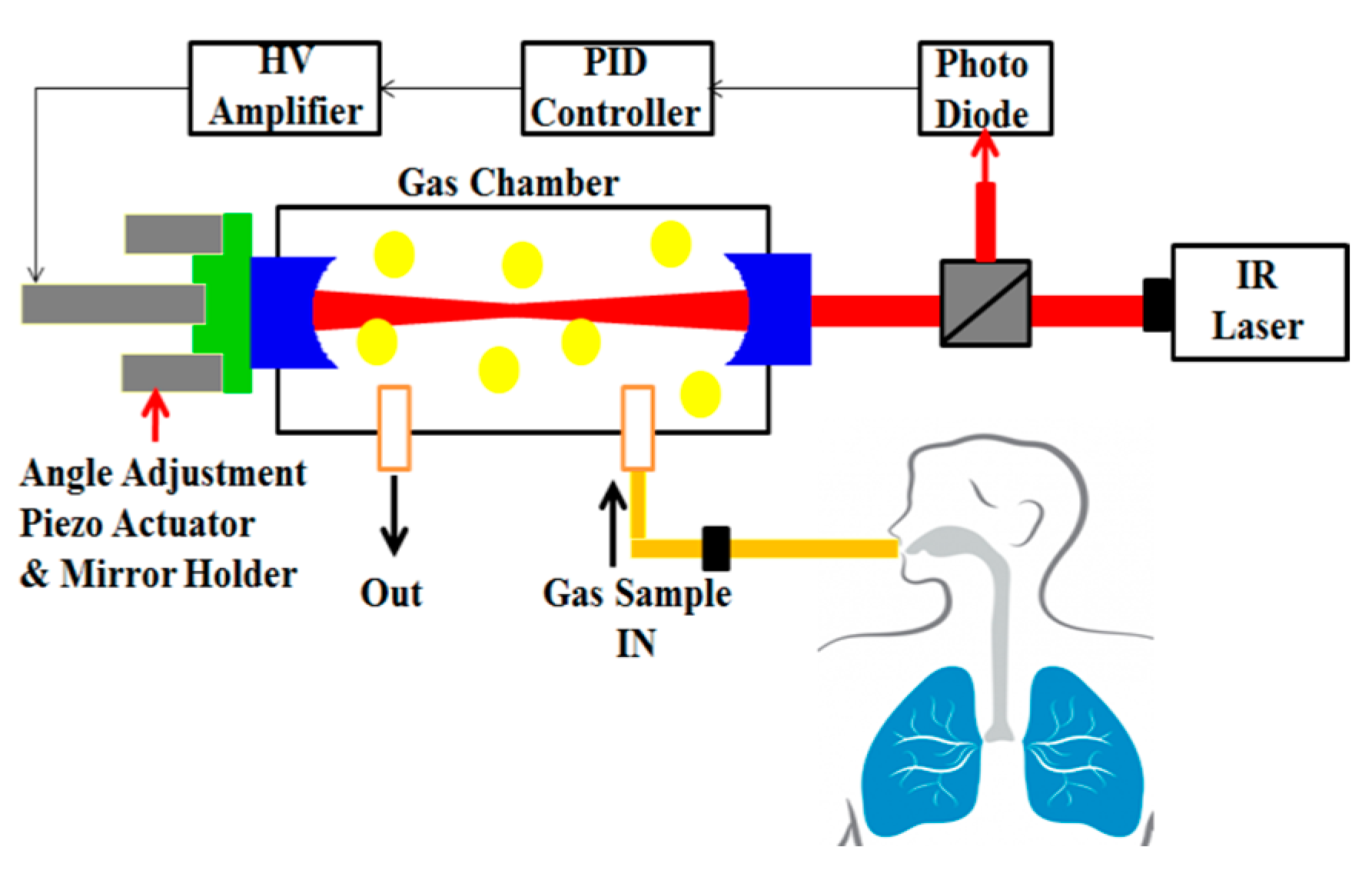
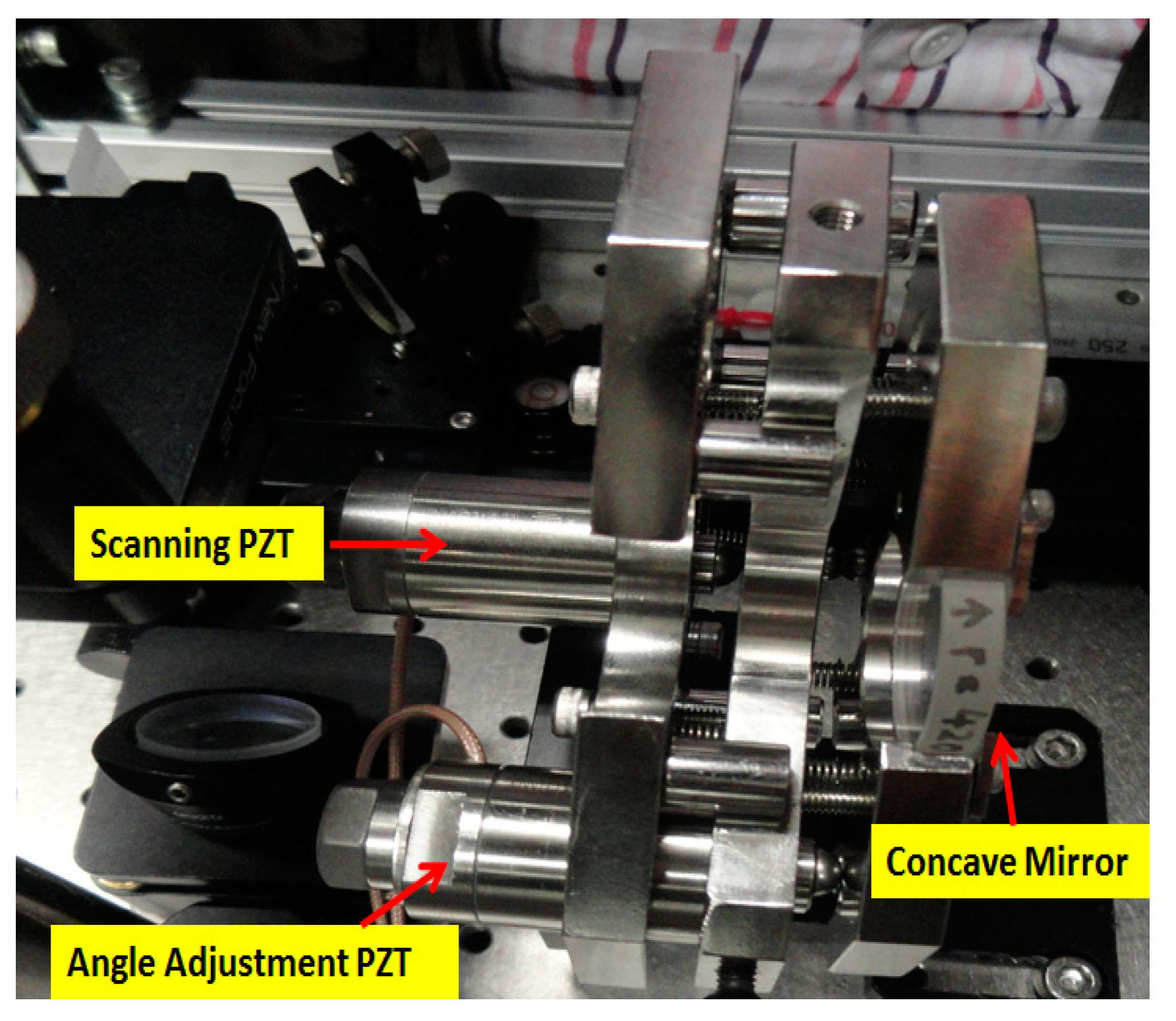
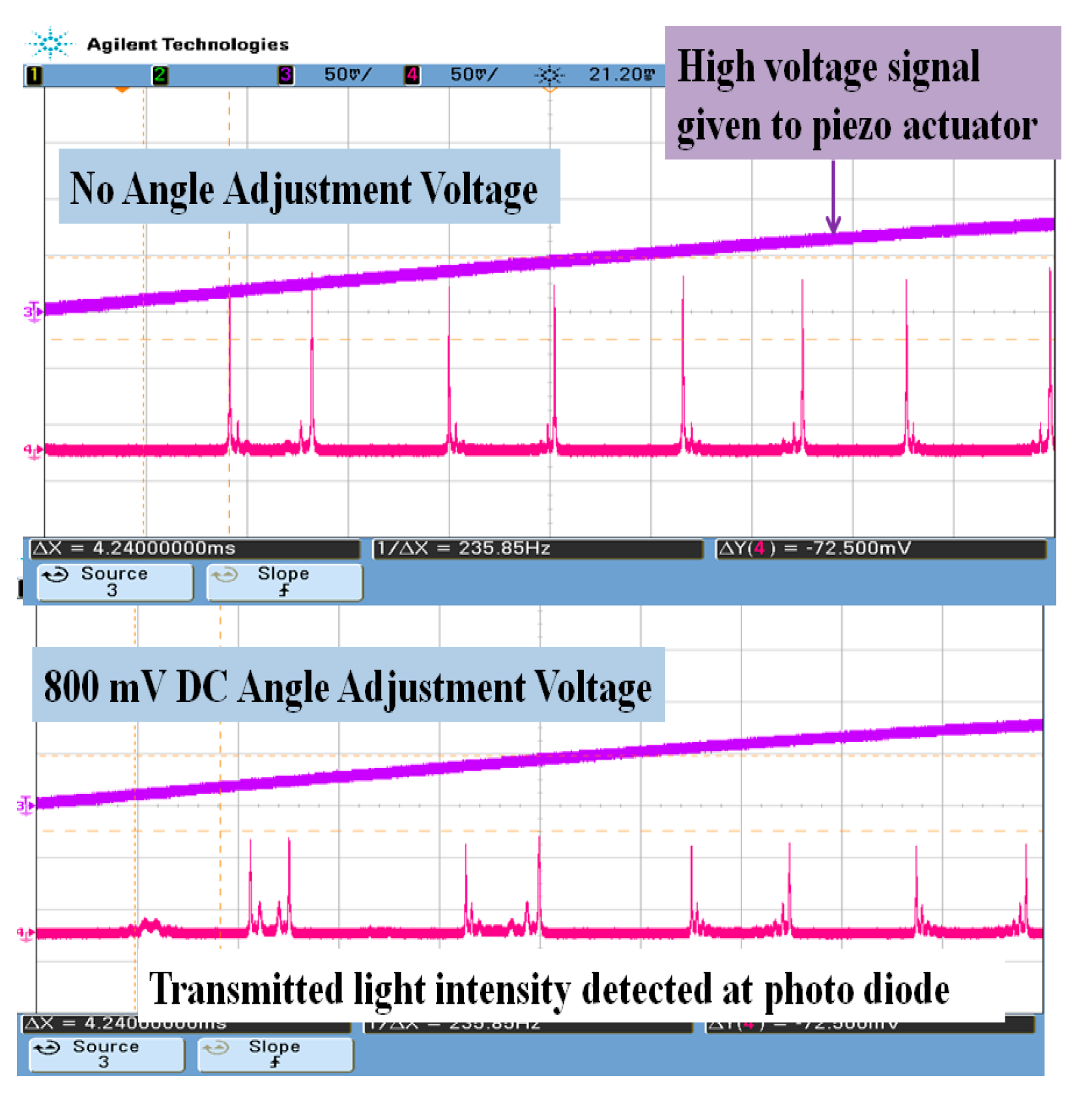
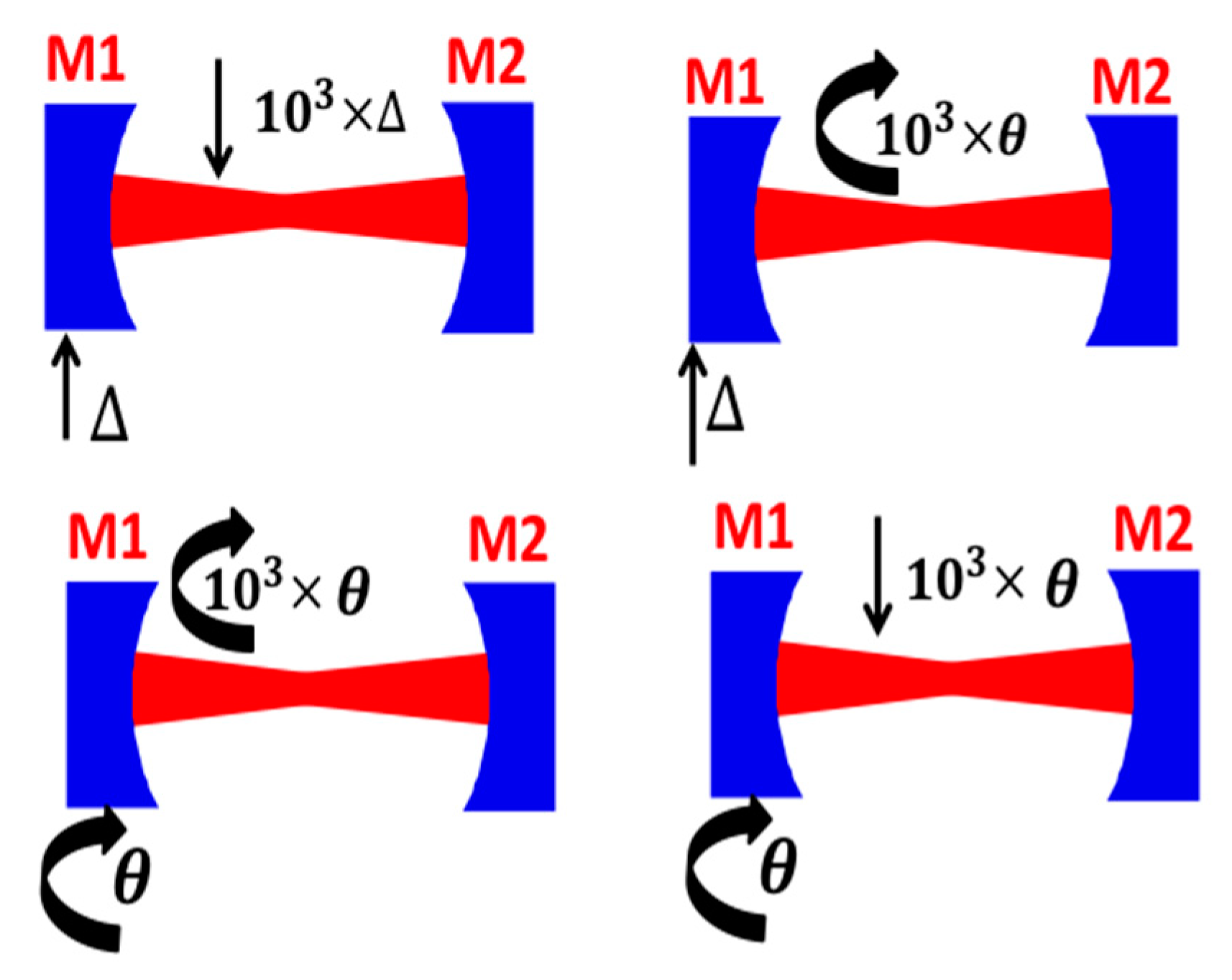
| Breath Gas | Disease |
|---|---|
| Nitric Oxide (NO) | Asthma |
| Carbon Mono Oxide (CO) | Oxidative Stress, Anemia |
| Acetone ((CH3)2CO) | Diabetes |
| Ammonia (NH3) | Liver disease |
| Ethane (C2H6) | Alzheimer’s disease |
| Pentane (C5H12) | Lung Cancer, Breast Cancer |
| Mirror | Position Shift (m) | Angle Shift (rad) |
|---|---|---|
| M1 (1 μm) | −1.61488 × 10−3 | 3.84615 × 10−3 |
| M1 (1 μ-rad) | −6.78461 × 10−4 | 1.61588 × 10−3 |
| M2 (1 μm) | 1.61588 × 10−3 | −3.84615 × 10−3 |
| M2 (1 μ-rad) | 6.78882 × 10−4 | −1.61588 × 10−3 |
Publisher’s Note: MDPI stays neutral with regard to jurisdictional claims in published maps and institutional affiliations. |
© 2016 by the authors. Licensee MDPI, Basel, Switzerland. This article is an open access article distributed under the terms and conditions of the Creative Commons Attribution (CC BY) license (https://creativecommons.org/licenses/by/4.0/).
Share and Cite
Rawankar, A.; Gondane, J.; Ravankar, A. Angular Piezo Actuator Controlled Laser Resonator for Precise Sensing of Respiratory Diseases. Proceedings 2017, 1, 38. https://doi.org/10.3390/ecsa-3-A002
Rawankar A, Gondane J, Ravankar A. Angular Piezo Actuator Controlled Laser Resonator for Precise Sensing of Respiratory Diseases. Proceedings. 2017; 1(2):38. https://doi.org/10.3390/ecsa-3-A002
Chicago/Turabian StyleRawankar, Arpit, Jyoti Gondane, and Ankit Ravankar. 2017. "Angular Piezo Actuator Controlled Laser Resonator for Precise Sensing of Respiratory Diseases" Proceedings 1, no. 2: 38. https://doi.org/10.3390/ecsa-3-A002
APA StyleRawankar, A., Gondane, J., & Ravankar, A. (2017). Angular Piezo Actuator Controlled Laser Resonator for Precise Sensing of Respiratory Diseases. Proceedings, 1(2), 38. https://doi.org/10.3390/ecsa-3-A002





